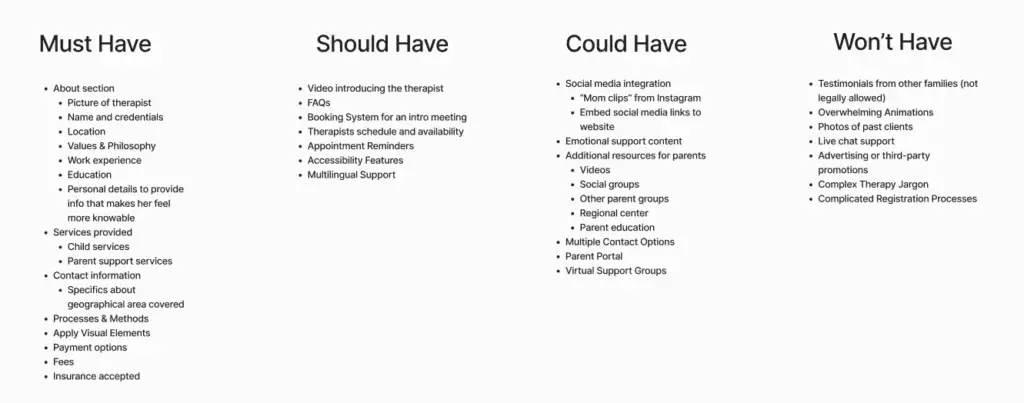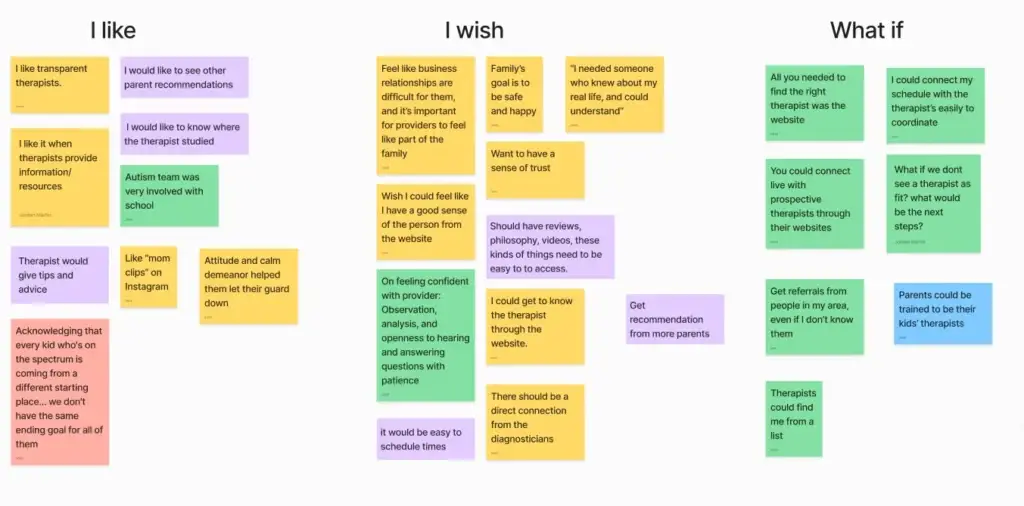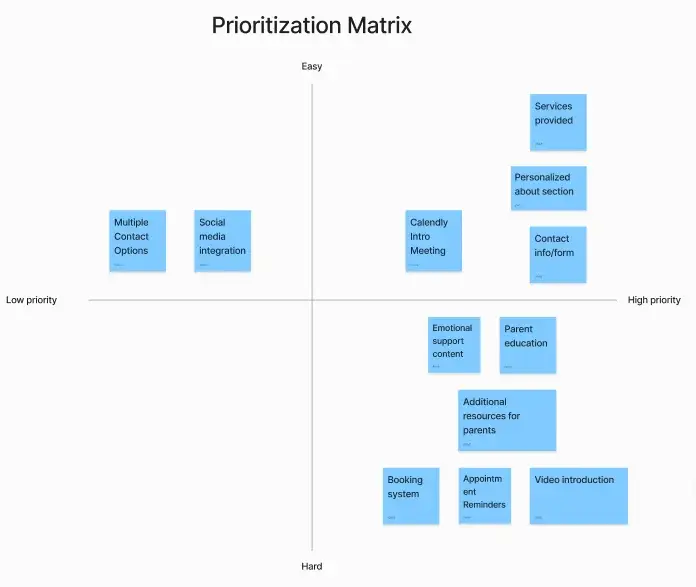How I Designed a User-Friendly to Enhance Engagement and Streamline Booking
ROLE: UX Designer/Researcher | Web Developer
TOOLS: Figma, WordPress/Elementor, Canva, Zoom
DURATION: September 2024 – October 2024

Without a digital presence, parents struggle to discover Erin’s thereapy services, and the absence of online booking options led to frustration, families, particularly those seeking behavioral therapy for neurodivergent children, needed a website that offered both emotional reassurance and a seamless appointment scheduling experience.
I designed a fully responsive, user-friendly website prioritizing intuitive navigation and emotional connection. By integrating trust-building elements like Erin’s personal story and client testimonials, along with a simplified, custom booking form, the site effectively met parents’ needs while enabling Erin to manage appointments with ease.
I created a website with straightforward, intuitive navigation, making it easy for parents to access essential information while feeling supported throughout their search for therapy services.
I created a streamline and user-friendly form that simplified the inquiry process making it easy for parents to connect and allowing Erin to efficiently manage incoming appointments.
By designing Erin’s first website, I established a credible and trustworthy online presence enabling her to connect more effectively with parents seeking therapy for their neurodivergent children.
“Jordan and the team truly nailed it. My expectations were so pleasantly exceeded – from the first interview to the final website (msbehaviorist.com), Jordan really brought my work to life. I’m so excited to launch my private practice with the help of such a beautiful website. Thank you so much!”
-Erin @ Owner of Ms.Behaviorist

I conducted user research to gain insights into the unique needs of parents seeking behavioral therapy resources, ensuring these findings informed meaningful design enhancements.
Defined objectives and prioritized features based on research insights, ensuring the design aligned with user needs for simplicity, accessibility, and effortless information access.
Created multiple design concepts with a user-centered approach, emphasizing clear information presentation and a seamless appointment scheduling experience.
Designed high-fidelity wireframes and mockups with a focus on accessibility and emotional connection, ensuring the website felt approachable and supportive for overwhelmed parents.
Implemented a responsive, functional website that streamlined the user journey, offering intuitive navigation and an efficient booking system tailored to stakeholder needs.
The research phase aimed to identify the primary challenges and needs of parents seeking therapy for neurodivergent children. These insights were essential in designing a website that offered emotional support, clear information, and a seamless consultation booking process.
Working alongside the UX/UI research team, we conducted comprehensive user interviews with parents of neurodivergent children. These conversations provided valuable insights into the emotional and practical challenges parents face when seeking a reliable therapist.
During the user research phase, we employed several methods to prioritize features and functionalities that would best serve parents like Mary Anne. Through a MoSCoW Analysis, an I Like, I Wish, What If exercise, and a Prioritization Matrix, we focused on the most impactful solutions while taking technical feasibility and user expectations into account.
The MoSCoW Analysis helped prioritize the key features for Erin’s website, highlighting must-haves like a contact form and service details, while downplaying non-essential elements like live chat and intricate animations.

In the I Like, I Wish, What If exercise, parents expressed their preferences for clear therapist information, their desire for a more personal connection through the website, and suggestions for improving the user experience with features like direct communication.

The Prioritization Matrix outlined key features according to their impact and implementation complexity, guiding the team to focus on high-priority elements such as services offered and emotional support content, while also accounting for future additions like social media integration.

Following the user research, I collaborated closely with the design team to create detailed personas, empathy maps, and user journey maps. These tools were crucial in understanding the key needs, behaviors, and emotional experiences of parents searching for behavioral therapy for their children.